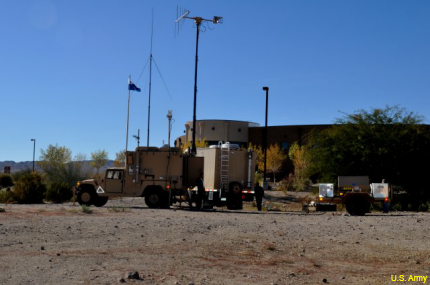Army tests small electronic jammers for use in training
The Army demonstrated small electronic jammers that can be used in training scenarios and are easier to gain approval for use.

A mobile electronic jamming system is demonstrated at the National Training Center.
As potential adversaries adopt the use of unmanned aerial systems, the military is regularly looking for ways to jam their signals. But testing those systems can be tough, because jamming technology that can disrupt radios or GPS signals fall under tight restrictions within the United States, given how they indiscriminately affect unintended targets.
Jammers or transmitters that operate over public airwaves usually must gain approval of military, Federal Communications Commission or the Federal Aviation Administration, which makes training exercises with such devices problematic, often limiting their use to the wee hours of the morning.
The Army is trying to make the use of these devices easier by limiting their power and precisely directing their signals.
A small direct-inject jammer tested recently at the National Training Center in California can be programmed to simulate jamming of radio signals that are used for electronic detection during training scenarios, the Army said in a release. These small devices require less power than earlier direct-inject jammers, which makes for a perfect fit for training centers where approval for such electronically denied environments previously was difficult.
The jammer, developed by the Threat Systems Management Office at Redstone Arsenal, Ala., can be installed between the antennae and radio transceiver and programmed to produce various jamming signals.
The emergence of electronic warfare such as that demonstrated by Russia in recent conflicts poses a significant challenge for the military, as it has been operating in what are known as permissive environments for the last 14 years where the use of EW has not been a primary focus.
NEXT STORY: Air Force activates five new cyber squadrons



